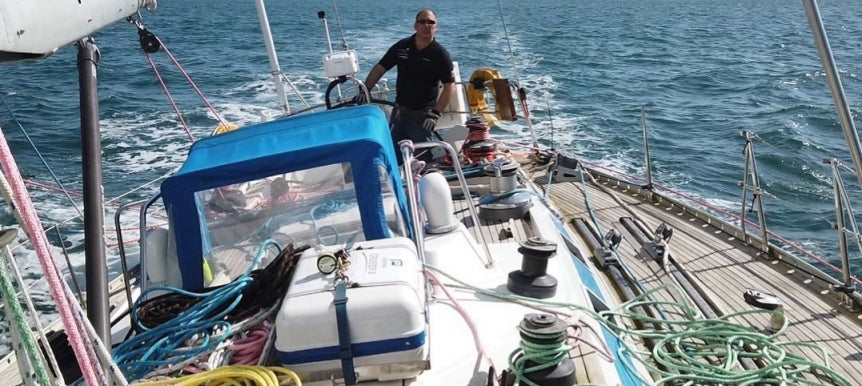Your Cart is Empty
FREE DELIVERY* WITHIN SINGAPORE FOR ORDERS OVER S$100!
FREE DELIVERY* WITHIN SINGAPORE FOR ORDERS OVER S$100!
Add description, images, menus and links to your mega menu
A column with no settings can be used as a spacer
Link to your collections, sales and even external links
Add up to five columns
Add description, images, menus and links to your mega menu
A column with no settings can be used as a spacer
Link to your collections, sales and even external links
Add up to five columns

Lets Talk Mooring
August 16, 2022 3 min read
There are some basic rules to follow, but every boat is different and the length of berthing space, availability and position of cleats and service bollards all play their part in how best to safely secure your vessel alongside. Here are some basic guidelines; we hope you find this useful and can adapt the basic principles to your individual needs.
HEAD AND STERN ROPES
These are used to hold your boat in place and should
ideally be run about 45 degrees from bow / stern to the pontoon, jetty or finger cleat. If the boat overhangs, run the line back onto the nearest cleat (as per the spring or breast rope in the diagram), taking care to avoid trip hazards.
The purpose of these lines is to hold the boat in place on the berth. They should be taut enough to allow the boat to sit comfortably on the berth without ‘snatching’, and certainly not ‘bar taut’ to prevent the boat from moving a little. If berthing outboard of another vessel, ensure appropriate fendering with head/stern lines and springs to the inboard vessel, plus an additional head and stern rope to the jetty / pontoon (do not expect your inboard neighbor to carry the weight of both vessels on his own). If to a mooring buoy, once secured alongside you should run your own main and lazy lines to the ring of the mooring buoy.

SPRINGS
These are lines to prevent the boat from moving back and forward along the berth. Usually one of these will carry ‘weight’ in response to prevailing wind or water flow
against the hull. They should be tight enough to hold the boat safely on the berth without allowing either the bow or stern to hit against pontoons, walkways or other adjacent boats!
BREAST ROPES
These are used to prevent drift in the event of a crosswind that may be blowing off the berth. For most leisure boats these are not needed as the combination of correctly rigged head/stern ropes and springs is usually sufficient to negate the effect of any crosswind on the boat.

The following table provides a diameter and estimated length guide for mooring lines made from English Braids Dockline or 3-strand Polyester:

FENDERS
These come in a variety of shapes and materials, plastic and rope being the
most common. They protect the hull by preventing it from rubbing against the berth or other boats moored alongside. Fenders should be held securely in place by a line that is attached to a secure point on the hull (not a guardrail), and at a height that keeps them clear of the water to prevent build-up of unwanted marine growth.
ELECTRICAL CABLES
These should be plugged INTO THE BOAT first, THEN run to the supply bollard on the pontoon for plug in. This prevents any opportunity to drop a ‘live end’ into the water. Cables should be neatly run by the shortest reasonable route with any excess length coiled and stowed neatly ONBOARD the boat. Take care to avoid trip hazards and keep cables out of the water at all times. Consider the risk of cables becoming ‘crimped’ or damaged and route them accordingly. All ropes should be regularly inspected for wear and tear. Ropes will weaken over time from the effects of weather and normal use. Chafing is common at any point where rope comes into contact with deck fittings or other hard objects. Always use marine grade rope that has been designed to cope with the demanding boating environment and consider protecting the rope at points where chafing risk exists.
Subscribe
Sign up to get the latest on sales, new releases and more …
